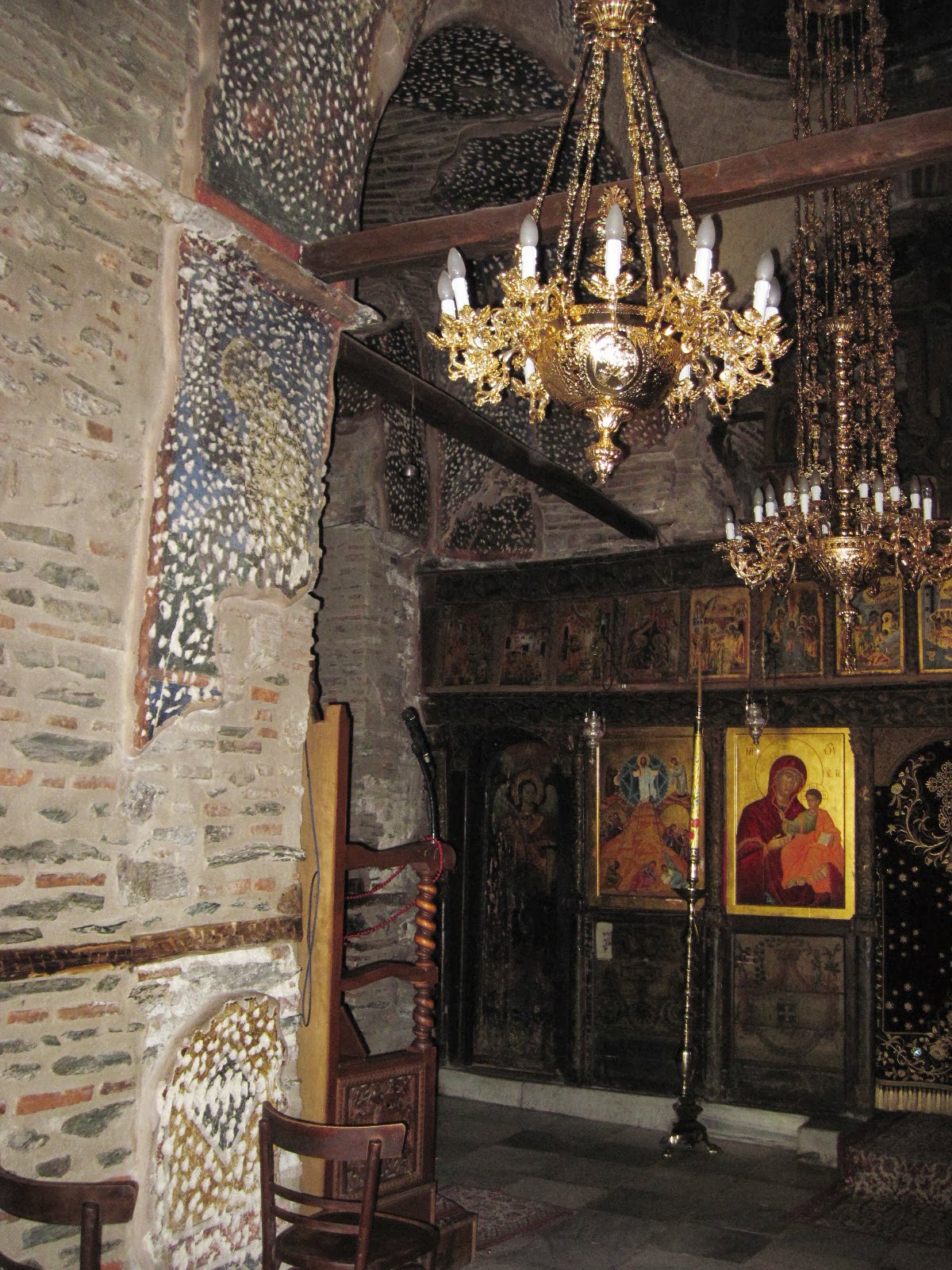9/4 Wednesday
Kostas
meets us at our street, and takes us up the block to catch a city bus. He’s
very excited to be giving us this private view of his city, promising some
special sites that few tourists will every see. We ride up through the streets
to the top of the hill, where ruined stone walls lead to the old fortress. It
looks like a charming neighborhood now, but before the bus services, this was
where the poorer people lived, trudging up the big hill at the end of their
workday in the city below.
The
Ottoman fortress sits at the very top of the hill, overlooking the city. Through
the centuries, it changed hands with the prevailing conquerors, Romans,
Sultans, whoever. Each built upon the ruins of the last. The walls are stacked
with broken bits of marble columns and fountains mixed in with the bricks and
stone. The grounds around the fort are filled with ancient rubble as well.
Settlers came up onto the hill and built their small houses with pieces of the
fort, backing right up against the wall to use it as part of the house. Until
the 1980’s, the fort was used as a prison, and we can walk along the guards’
lookout to see the cells and yards. There are no tourists here, or even anyone
watching over the place, despite the fact that it’s been designated a UNESCO
Heritage site.
Just
outside the walls, Kostas brings us to a pile of marble rubble and points out a
slab in the mix. There is an inscription in Hebrew on it, and we can see that
it’s actually a tombstone from a Jewish cemetery. There had been a large
community of Sephardic immigrants here, before WWII.
We
walk down the hill, through the narrowest of the streets, and come to The
Vlatadon Monastery, founded in the 14th Century and still in use
today. Again, we hear the story of one incoming culture taking the place of the
former. The Byzantine chapel of the monastery was built over a Grecian temple,
incorporating some of the columns. Later, the Ottomans plastered over the
interior frescos, to use the space as a mosque. When the Orthodox Christian
monastery was established, the plaster was chipped off to reveal the early frescos
once more, now pitted and broken from the plaster.
Next,
walk down along a stone passage to visit the small, precious Church of Osios
David. A fifth century mosaic over the altar exists here undamaged, and the
golden tiles glisten in the soft light, revealing a beautiful depiction of
Christ as the Lamb of God.
Our
next stop is another small chapel built in the early 14th century,
filled with frescos in incredible condition. Kostas tells us that a Sultan
ordered the execution of some 30,000 Christians, then regretted his actions and
established an orphanage to care for their surviving children. Again, there are
no other visitors here.
As
we continue on our walk down the hill, Kostas brings a water bottle out of his
tote bag. A grizzled black dog, shepherd mix, is lying in the middle of the
street giving us a big stinkeye. “This dog is always waiting for me,” says
Kostas. “Go around behind me and we’ll pass him.” He starts squirting as the
dog jumps up barking furiously, waving us around as he chases the dog up the
hill. “One time I had Italian guests, and he bit the man. But my daughters have
been bitten before, so I knew the doctor to go right away.” This is slightly
more information than we need.
As
we come to the bottom of the hill, we reach some of the more accessible
landmarks in the city, and visit several of the major monuments. At the 7th
Century Church of St. Demetrius, we have the great luck of visiting the crypt,
presumed to be the site of the Saint’s martyrdom, during an unusual lull in the
tour traffic.
There
is a huge excavation site in the middle of the city, where a Roman Palace is
being unearthed. The site extends into the very difficult excavations going on
related to the attempts to build a subway through the city. Roman roads and
ruins of incredible historical importance are exposed throughout the metro
plan, causing terrific problems and opportunities at the same time.
Kostas
guides us through a few more sites, the Arch of Galerius, the Rotunda, The Aiga
Sofia, accompanied by his informed and enthusiastic commentary, until we circle
back to our own neighborhood, thoroughly toured.
1 Video Included
Thessaloniki Walls








No comments:
Post a Comment